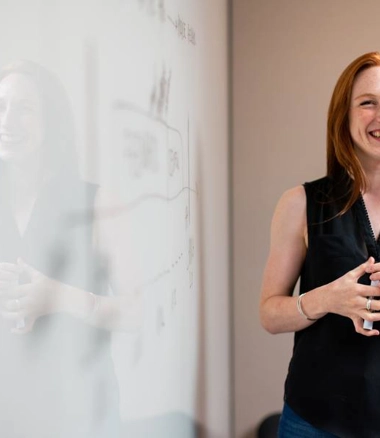
We recently caught up with Gavin Crump, Founder, Director and BIM Consultant at BIM Guru, a specialist BIM consultancy dedicated to bringing a connected, progressive, and collaborative approach to the AEC Industry.
Gavin was able to provide some insights into the Digital sector, as well as some invaluable advice to those out there thinking how about they can become ‘BIM ready’.
CR: First of all, Gavin, please tell us a bit about yourself and BIM Guru.
GC: I’ve been in the Australian AEC industry for almost 10 years now, and began as a graduate architect. Over time, the projects I worked on exposed me to my true passion in the industry – BIM! In 2015 I moved to Sydney from Adelaide to pursue my first BIM management role, and have since worked at a few large architectural firms in Sydney.
At the start of 2020 I launched my consulting business, BIM Guru as a sole trader. My business’ goal is to help spread better practices and standards to its followers and clients in order to fast track the awareness, adoption and development of BIM.
Around the beginning of May I began selling my Revit template and supporting content to the public, from which more than 500 sales have resulted. In early 2021 I look forward to launching a course platform which will teach general workflows, but also how the BIM Guru Revit content and template can be used.
CR:How you define ‘BIM’ and ‘Digital Engineering’? How are they different (if at all?)
GC: BIM is a term that has been thrown around a lot over the past 15 or so years – it can be hard to form a consistent definition of what it’s all about at the industry level. Most professionals will tell you that BIM is all about collaboration and workflows (and I would agree with this mostly). BIM is often reduced down to a software package, which is far too narrow of a definition - for example you may sometimes hear people say ‘BIM is Revit’. Whilst technology supports BIM, it is not BIM itself (but it’s still important!).
I first encountered the term ‘Digital engineering’ in 2018, mainly when dealing with contractors. This term aims to encompass a bigger picture than what BIM can – I think this term is more understandable for those not authoring models or interacting with them regularly. Just like BIM can be achieved in a model, it can also be a database or spreadsheet as well – so we’re really engineering digitally with more than just models, so a reframing was necessary. I think the term ‘BIM’ became quite overused and misrepresented as well, so it was the industries attempt to refocus on what we’re trying to achieve overall.
CR: Who is involved in BIM/DE, and whom does it effect?
GC: Given that BIM is ultimately process driven, it can affect anyone engaged on the project. Whilst some stakeholders on a project may interact less frequently with BIM, I believe it can be related to them all in one way or another. At the closest level BIM involves the authors – architects, engineers and contractors, but the ways in which the authored models and data are used goes far beyond this.
Whether it be design, planning, procurement, construction, or post occupancy BIM affects each stakeholder in one way or another.
CR:What are the benefits of Digital/BIM at design stage? Why is it important for engineering design consultancies to be fully ‘BIM ready?’
GC: There are some obvious benefits to working with BIM during the design stage; working and thinking in 3D, capturing briefed data, measuring the changes and enhancing communication between the design team as well as to the client. Most clients really struggle to engage with 2D drawings and waffly design reports – BIM is the new normal for many of them now.
I believe consultancies should be BIM ready as this is what most clients expect – once they’ve had a better outcome on a project using BIM they will likely question anyone who tells them it is not worth it; they’ve seen and now know better!
CR: How can engineering consultancies become ‘BIM ready’?
GC: This really depends on what stage of their learning journey they are placed at. The only way to truly be BIM ready is to dive in and begin to learn about it - there’s so much information out there compared to when I first began using BIM (and there was even less before that). Some learning will likely need to be undertaken outside of the 9-5 grind, especially if you’re trying to fast track your readiness.
The industry is always moving forward so you’ll never be prepared for everything and anything, but there are still many aspects of BIM to be learnt to remain competent. These include legal framework, interoperability between programs, emerging technologies and how it all relates back to projects and clients
CR: What softwares/skill sets should they (consultancies) be focused on upskilling?
GC: It probably depends on how experienced they are at the current moment – I rarely encourage people to begin with a software focus, context is necessary first. For design consultancies, such platforms, and the needs they fulfil may be.
- Programs for design and concept (e.g. Rhino 3D, Formit)
- Data storage and processing (e.g. Excel, SQL)
- BIM authoring and delivery (e.g. Revit, ArchiCAD)
- BIM coordination and review (e.g. Navisworks, Solibri)
- Automation and computation (e.g. Dynamo, Grasshopper)
- Visualisation and communication (e.g. Enscape, UE4)
- Data analytics (e.g. Power BI, Tableau)
- Common data environments (e.g. BIM360, Asite)
Each of these aspects/platforms’ feeds into a bigger picture, the workflows of design, coordination and construction. If a consultancy relies more on one of these phases than another, then their requirements will be weighted differently between some of the platforms listed above.
CR: What advice would you give to engineering consultancies upskilling their staff? What should be the focus?
GC: Take advantage of adjacency – form internal groups that can support their members on their upskilling journey. Avoid the tendency to send staff on intensives or sit them in front of online courses, this really takes the fun and relatability of what they learn out of the experience. Consider hiring a few experts that have the right attitude to become leaders of these groups, or identify those willing to lead these groups in their goals and focus. Make sure that you don’t let staff become ‘super users’ with no time to share their knowledge, they tend to find better opportunities at other companies which means all their knowledge walks out with them!
Don’t be afraid to engage with external consultants, we can fast track your exposure and help template your workflows/content to achieve your needs more quickly. A bit of money spent up front saves an awful lot later potentially!
Ultimately, embrace a culture of change and curiosity – question the status quo, try not to be too nostalgic and be ready to commit some non-billable hours to the cause. Don’t sweat the small stuff to begin with such as line weights, focus on workflows and the bigger picture.
CR:What ROI would you expect a consultancy to see from becoming BIM ready?
GC: For the first 6-12 months expect to ‘lose’ some money due to BIM transition. Change is rarely net positive financially, but after about a year (and maybe one or two pilot projects) you could expect to see small efficiency gains that grow over time. With these come happier staff, cleaner QA systems and more well-defined processes – each of which could return significant ROI.
The AEC industry is typically not good at measuring its efficiency, if the candle must be burnt to deliver a project then ‘so be it’ is usually the norm attitude. Personally, I can attest that having worked at firms of the BIM systems I’ve developed, we saw serious improvement in deliverable quality and overall employment mood when BIM was developed further.
If I had to put a number on it (which is quite difficult) I’d say that each year you might see a 15-30% stacking ROI after the first year of investment into BIM workflows at an organisation. So many factors can impact this though of course, if a firm only partially commits to true change then the ROI would be reduced in turn.
CR: How can BIM Guru help?
GC: Whilst BIM Guru offers general BIM consulting, the main way we’ve helped our clients and customers so far is by providing better places to begin from. Many of our clients have begun with us from our Revit template and content, and can immediately see systems that work – it’s sometimes as simple as that. It could be as simple as having a fit for purpose piece of content, all the way to having code friendly data structures to support automation workflows.
BIM Consultants have the ability to accelerate change in an organisation, whilst guiding the process over the ‘speed bumps’ that are inevitably hit during periods of change. Approach with an open mind and as few presumptions as possible!
If you're currently undergoing BIM integration or looking at ways to improve your digital processes, Gavin would be more than happy to advise you. You can contact him on gcrump@bimguru.com.au





